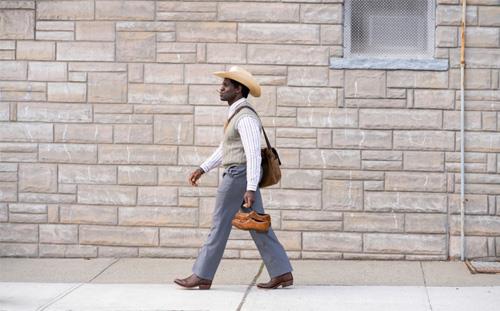
It's unfair to judge a television show against its source material. It's hard not to do that with Little America, an eight-episode docudrama series that launches Friday on Apple+.
Little America began as a series of short, first-person narrations by immigrants in Epic magazine, almost stream-of-consciousness reflections about their lives since coming to America.
The narrations – short monologues, really – are fascinating because they collectively create a celebration of immigrants, yet they do not romanticize either the speakers or their new lives.
They portray people born outside the United States as very much like people born within. If they don't share language and ancestral religion, they have the same dreams, concerns, and priorities.
Life, liberty, pursuit of happiness. You know.
Those with families want them to live as safe and comfortable a life as possible, so their children may live an even safer and more comfortable life. Those who are more on their own want the opportunity to earn a good life and the freedom to enjoy it.
Their appreciation for America is implicit, rarely put forth as a declaration. It's not that there's a sense of resentment or hostility. It's more that these narrators focus more on the nuts and bolts of their own daily lives.
Just like "the rest of us."
Little America, the TV series, captures some of the feeling of the magazine series.
The TV version takes each immigrant's story and spins it into a dramatization, approximately half an hour long. Names, places, and some characters are changed, at times, apparently for dramatic purposes and other times probably because of rights and permission issues.
To the show's credit, the general thread of each story remains intact, and the TV versions generally end up at more or less the same point as the print monologues.
The first episode, for instance, follows the life of a boy who emigrated from India to Utah with his parents when he was very young.
His parents scrimped, saved, and bought a motel franchise. Soon after they did that, their years-long application for permanent residence timed out, and they were sent back to India.
The boy, 12 at the time, was left with an uncle and the motel. The boy was a brilliant, diligent student with a strong work ethic and a bright future. That did not necessarily equip him, at 12, to run a motel. In many ways, that's what he ended up doing.
Over the next decade, which is how long it took for the immigration issue to be worked out, his life took very different directions.
He took at least one extraordinary measure in an attempt to bring his parents back, and that measure becomes a flashpoint for the story.
The TV drama brings us right to the present, which ironically creates a problem. Television, logically enough, wants stories with beginnings, middles, and endings, stories that started then and finish now.
But many of these stories, perhaps most, do not have endings. They are snapshots, capturing moments or years in time, but still only pages in a longer book.
That sense of fluidity makes the printed series stronger, reinforcing the fact that these lives, like most lives, are works in progress.
Because the stories are still being written, the magazine series doesn't have to spell out the particular obstacles and challenges facing immigrants. It conveys them more effectively by letting them be one set of issues the speakers face – one among many.
On TV, some of those obstacles and challenges feel diluted as we watch what feels like a familiar TV drama, with theme music and dramatic cutaways.
Little America has already been renewed for a second season. That's good because the stories are important, and the point about our common humanity is one that more people who already live in America need to acknowledge.
Maybe read the print versions, too.